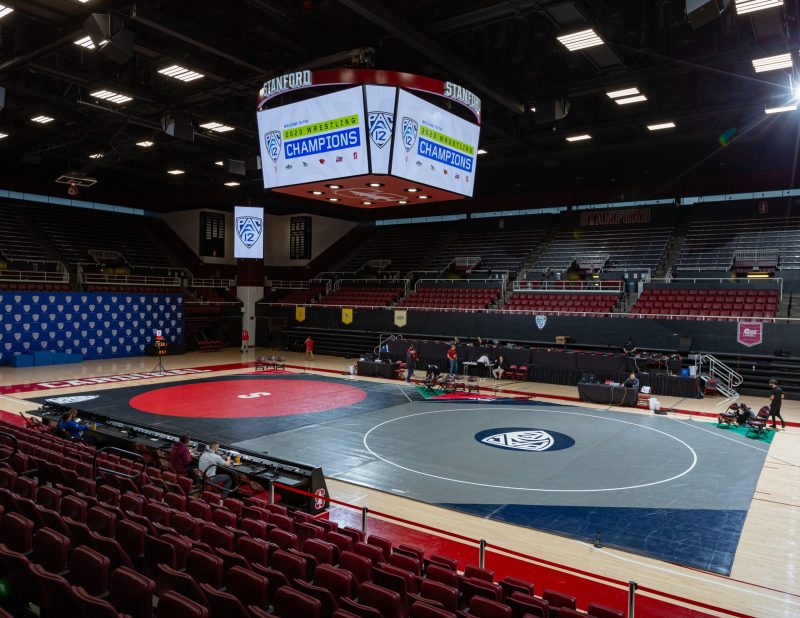Stanford University found itself prominently displayed in the Dec. 6 edition of “60 Minutes.”
It reminded me of the rhetorical question I asked myself repeatedly after the athletic department’s decision to cut 11 varsity sports earlier this year.
Who are we?
The more I think about a decision that saves all of $6 million from a school with a $29 billion endowment and a $6.8 billion annual budget, the more I ask that question. The crew of “60 Minutes” laid the issue out a little different, but I still winced each time Stanford was referenced in the report.
Who are we? Are we the school that eliminates programs at the first sign of difficulty? Are we the school that accepts the status quo rather than do everything humanly possible to find a solution and a way to maintain opportunities for students?
Those questions gnaw at my belief in what Stanford is supposed to represent. The school is supposed to be investing in human endeavor, not receding from it. We aren’t supposed to be doing cost-benefit analysis of different programs. We are the school that takes on the challenges that other schools refuse to take on because we see opportunity where others see expense.
I know that sounds elitist and there are plenty of times when Stanford fits that bill. The reality is that we have a duty to take on those challenges: Stanford is a gift not just to those of us who have had the privilege of attending, graduating and forming a great community. It is a gift to society, generally. Stanford is a place trying to impact the world by creating leaders and high achievers. We are supposed to be about the dreams of youth and the passion to change the future. We’re named for a boy who died at age 15 and whose parents had imagined giving him every chance to chase greatness. Instead, they responded to their anguish and heartache by creating a place for other young people to chase greatness.
So how is it that at a time when we have built almost unparalleled prosperity, we’re cutting back? Over the past decade plus, we’ve averaged $1 billion a year in donations. Sports has been a huge part of that giving. Our football program is in the midst of its greatest period of success in school history. When we married football success with a capital campaign that started more than a decade ago, the table was set for grads and other donors to open their wallets.
Of course, having money is not just an excuse to spend it. It’s also easy for me to sit here and tell the people who run the University how to spend money. Admittedly, I’m not a big donor to the school. I give my time as much as I can, but I’ve benefitted far more from Stanford than I have repaid. At least so far.
Yet I know what Stanford symbolizes to me. As a sports writer, I’ve pushed boundaries to do investigations and chase stories that other people wouldn’t. I did that because I’m passionate about being different and because Stanford gave me the tools to use my passion. I am forever indebted to the school and to the people I met along the way.
From that prism, my view is we should always do more, not less. We should be the school that supports wrestling and sailing and rowing and fencing and the other sports that were on the chopping block.
We should always remember that our purpose is not just to do the expedient. We will always have an influence in Silicon Valley. Our engineering, computer and science programs will always produce the best and brightest. At the same time, we have built a world-class music program and our program in the media business is burgeoning. Those programs aren’t as profitable as STEM, but they are worth investing in. Sports, music and media help create the well-rounded experience that Stanford is supposed to stand for. They draw people who are both high-achieving and, just as importantly, different thinkers. We want to create a community that sees the world in multiple ways and approaches issues from multiple perspectives.
We aren’t just a great technical school, like MIT or Caltech. We are a place that embraces the call to be as well-rounded as possible.
In sports, rather than cutting programs because of $6 million or because COVID-19 has hurt our football program, we should be looking for solutions. One of them is self-evident. The Pac-12 Network has been a significant economic disappointment for the conference. Each school has left millions on the table and the presidents of the conference schools haven’t pushed hard enough on the network to change its approach. It has gotten to the point that the Pac-12 Network is having a drastic effect on the football product we are putting on the field. Stanford should be a leader in fixing the problem with the network, not merely going along with the flow of other schools that see cuts as the answer. We aren’t a place where sacrifices in important programs have to be made. We aren’t a place that has to choose where to invest in talented young people who can spread the meaning and message of Stanford.
That kind of thinking is antithetical to who we are. We are a place that is truly special.
We are Stanford.
—Jason Cole ’84, Former Editor of Sports at The Stanford Daily
Contact Jason Cole at jphilcole ‘at’ yahoo.com.
The Daily is committed to publishing a diversity of op-eds and letters to the editor. We’d love to hear your thoughts. Email letters to the editor to eic ‘at’ stanforddaily.com and op-ed submissions to opinions ‘at’ stanforddaily.com. Follow The Daily on Facebook, Twitter and Instagram.
